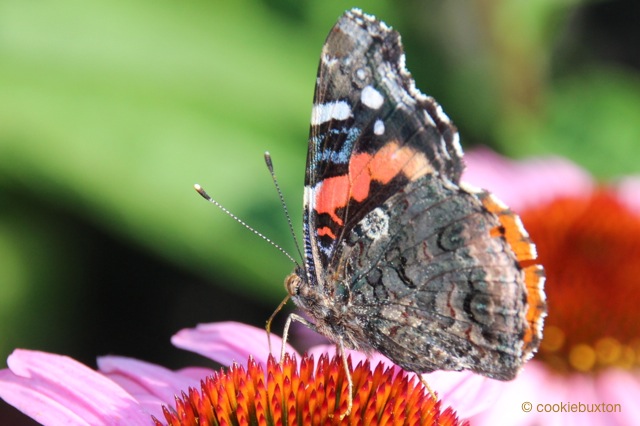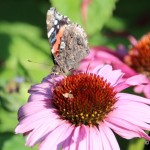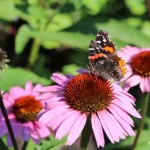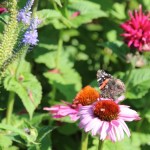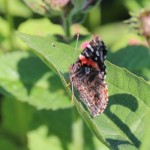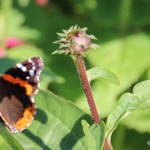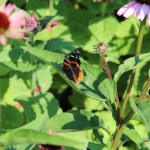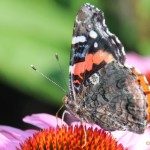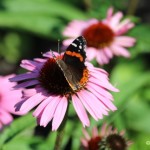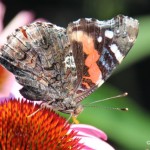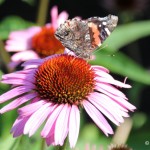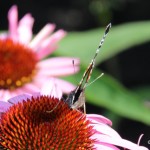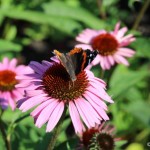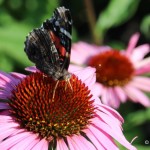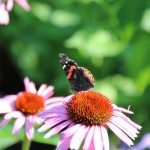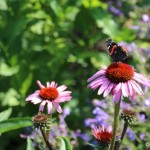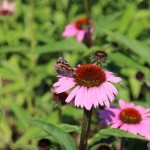Red Admiral Butterfly
Red Admiral Butterfly – Vanessa atalanta (Linnaeus, 1758).
The Red Admiral loves to dine on the sweet nectar of the coneflower and so has found its way into an abundant patch of these gorgeous orange and pink flowers in the northern summer garden.
Making its home throughout North America, the Red Admiral heads toward the northern range of its territory in the spring, where it can produce two to three new generations over its summer breeding season. The process starts with the adult butterfly laying small round green eggs on the undersides of the reproductive host plant, false nettle. The young caterpillar is black-ish in colour and is covered in hairs that later develop into the characteristic spines on caterpillars that help to discourage predators.
As the caterpillar matures, it begins to show light markings of orange and sometimes white along its body.
Often staying near or on its host plant, it moves into the chrysalis phase, handing upside down, and cocooning into a covering of light grey or brown with shiny spots. When the process of maturation is complete, the mid-sized Red Admiral emerges into its handsome adult form. Its camouflaged outer wings look like the bark of a tree, and it has a brownish-black inside wing body, decorated with a bright band of orange across each wing and a strip of orange along the bottom of the wings, with a series of small black dots in line across the span of orange.
The semi-circle of orange, in the shape of a horseshoe, is a distinguishing feature that helps to identify the Red Admiral butterfly as it dips and darts through the garden looking for coneflowers and the elongated flower clusters of the butterfly bush.
The dark wing tips on the Red Admiral have symmetrical white markings, looking very much like ink blot paintings where the paper has folded on some dots of paint, reproducing the identical pattern on each side. On the exterior of the wing, looking closely at the blue patterning among the flecks and shading in grey and brown, one can see a blue heart-shaped pattern running near the top of the wing.
As a resource for this article, I have referred closely to one of the newer books in my library, purchased at the Des Moines Botanical Garden gift shop. Titled The Life Cycles of Butterflies, this book by J. Burris and W. Richards won a Children’s Books award, no doubt for its excellent photo journalism as well as its informative content.
Photos and Text: copyright cookiebuxton, N. Kampen
Photo location: NK home garden
Photographic Gallery
Click on any image to enlarge, and click on the enlarged photo to advance through the series.
